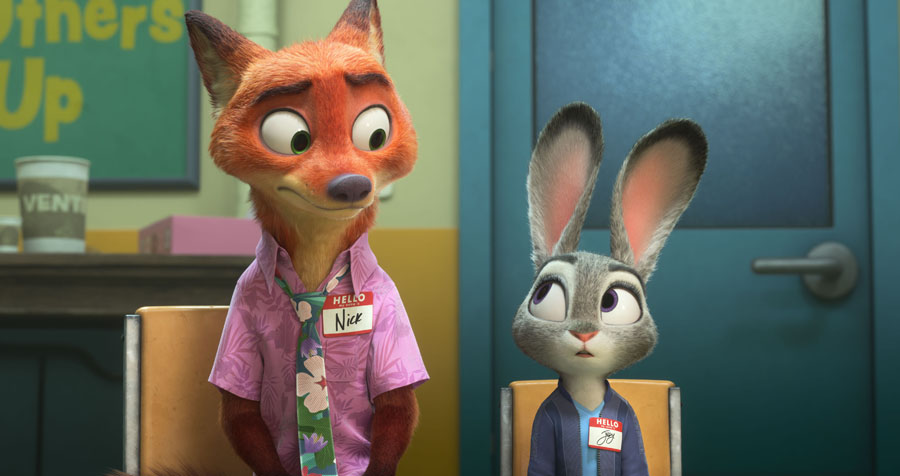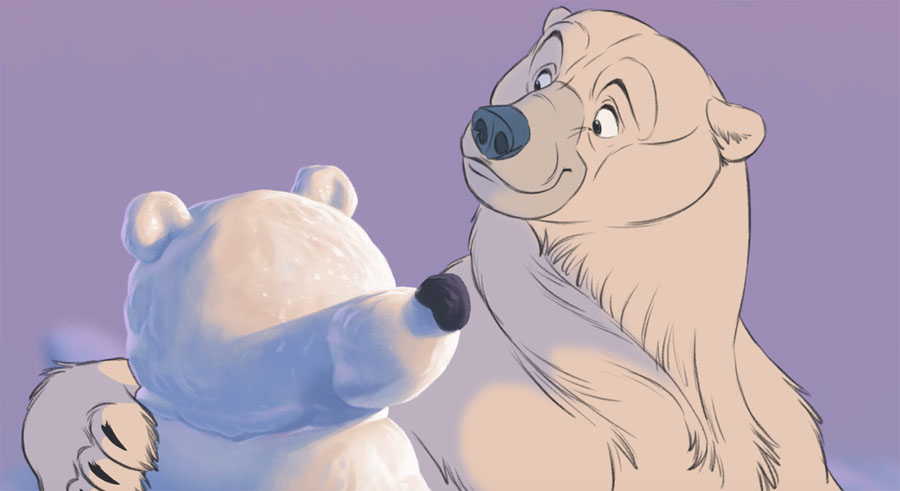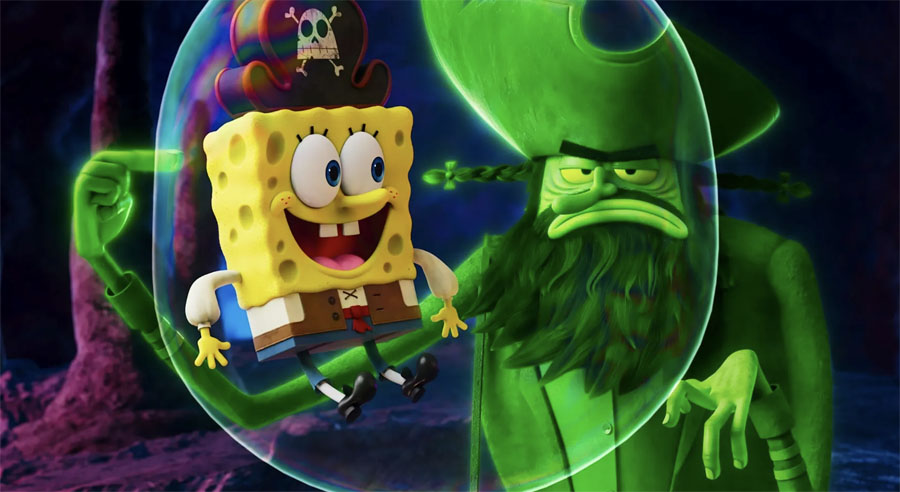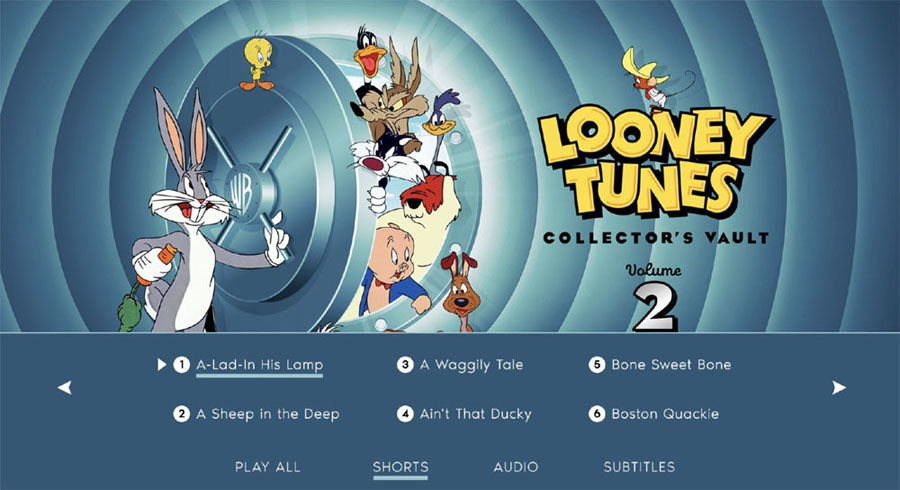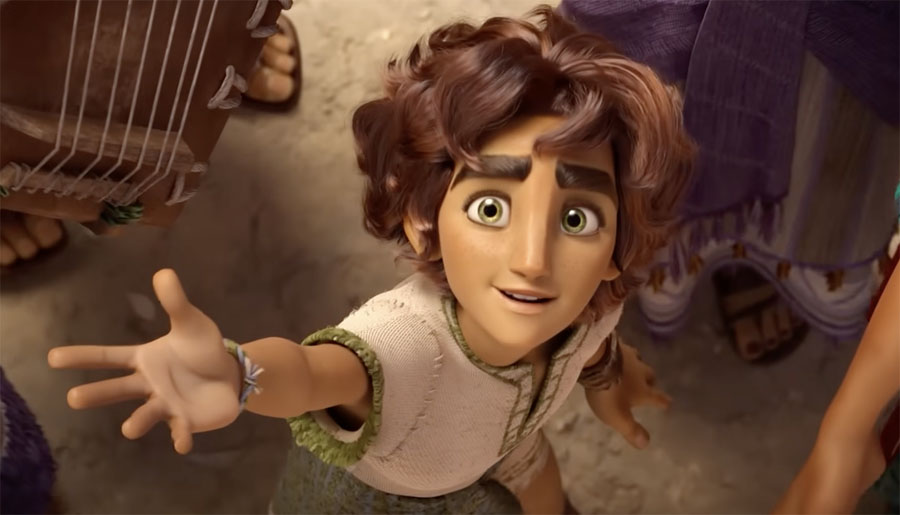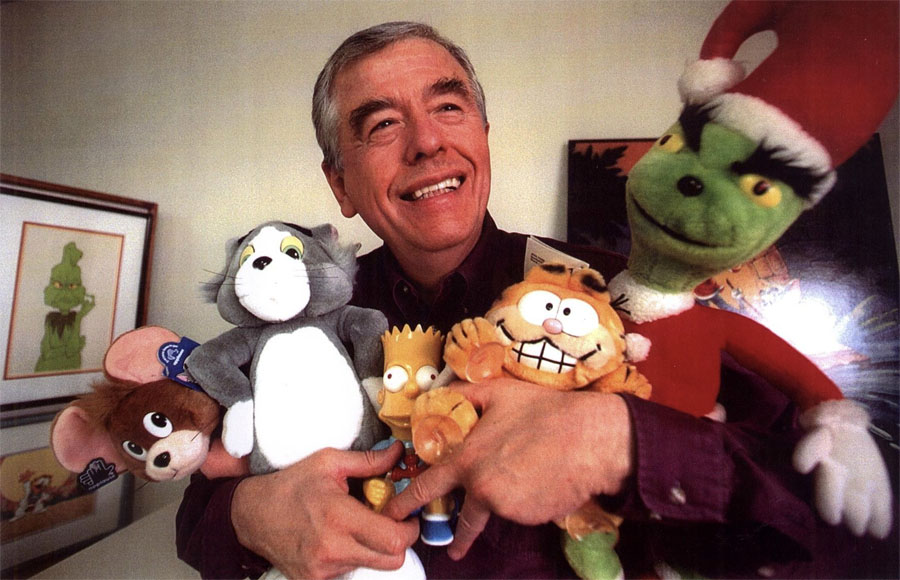The new Pixar film Coco speaks about ancestral ties, remembrance, and celebration. It is a story that follows young musician Miguel on his journey into the Land of the Dead to solve a family mystery, embrace his passion for music, and create his own destiny. I interviewed Story Supervisor Jason Katz, who has had a hand in nearly every Pixar release since Toy Story, including being co-story supervisor for Finding Nemo and Ratatouille. He has been involved in building Coco from the beginning, and talks here about his perspective on leading the story department as his mentor Joe Ranft would have done, what inspired him in developing the film, and how Coco is much more about life, remembrance, and his grandmother Florence, than about death.
Leslie Combemale: You were a storyboard artist. When you are on the sites looking for jobs in animation there are always studios looking for fast, tight, talented storyboard artists. Some people want to get into the field are reticent, thinking storyboard artists remain storyboard artists. Getting into the story department starts with being a storyboard artist, no?
Jason Katz: Yes, getting into story being a board artist is pretty much it. As far as moving on and becoming a writer, a director, and all that, at Pixar, we’ve got a tradition of a lot of our directors have come out of story. Adrian Molina, the director, came out of story. It’s pretty consistent. The thing about the story process is it’s a marathon event, so putting up the movie in reels and iterating the story year after year—at Pixar we put up our story every three to four months, so you definitely learn about the entire pre-production process. As far as creating our films if you don’t have the story figured out, it doesn’t matter how beautiful it looks. That tends to be where a director has the most influence and you have the ability to really start to define who you are as a storyteller. I think, too, that as a board artist at Pixar you have a lot of ability to influence the film. Everybody has a voice in the room, and the expectation is for us all to pour ourselves into it, so what I love about working now is i’m working with people who have been in the industry for a couple of years and people who have been in it for dozens. They all have the same ability to influence the film and nudge it along.

LC: Can you talk about the bridge between being a storyboard artist and being the head of story from your experience? And you’re the co-creator of Coco, so you are right in the thick of it as far as your involvement in all aspects of the making of this film, i’d imagine.
JK: A lot of it is time served. I started out as storyboard artist and figuring out what it meant to be a board artist and I was lucky enough to have Joe Ranft as a mentor. He was my story teacher first year at CalArts and I wouldn’t be at Pixar if it weren’t for him. He’s the one that hired me. He’s the one who taught me how to do the craft. I was lucky enough to get into Pixar in the early days where we were all figuring it out together. John didn’t know what it meant to be a director, and Andrew didn’t know what it meant to be a writer. We were all learning as we were going. I think that ability to just do the job and I love storyboarding, I love the job, but the ability to move from that to a more supervisory role and get to have a little bit more responsibility, a lot of that was just relationships. It was building relationships with people and trust me with a little more responsibility. The first time I had a chance to do any head of story stuff was on Finding Nemo and it was on the last year of Finding Nemo. Finding Nemo had three heads of story, Dan Jeup, Ronnie Del Carmen and myself. Ronnie transitioned off to be the production designer for the short One Man Band. I stepped in and supervised. It was an opportunity to have a bit more responsibility.
 The story supervisor is different on each film. A lot of it is about the relationship. I’ve worked with Lee (UnKrich) now on a lot of movies as a director and in story. We did Toy Story III together and now Coco together so a big part of my day to day and how we work together and how we run the story department is based on how we have worked together over the years. Being able to assert my influence on the film in general and help foster and staff an amazing group of story artists executing Lee’s vision and drawing it up, that took a little time and a lot of it came together from Lee and I working together and understanding what he is after. It’s not just you have more of a say, or you have a bigger plate at the table. To be the head of story at Pixar is really an opportunity, and this is from the Joe Ranft school, a big part of the job for me is to make sure that every story artist i’m working with is able to do what they can do at the highest level, and that they’re feeling connected to the film and feel like they can execute and that they are completely clear about and in sync with what our director Lee is looking for. It’s really more about everybody i’m working with is shining as bright as possible and that the director is getting everything they need to see their vision come to life. I’m kind of the facilitator along the way.
The story supervisor is different on each film. A lot of it is about the relationship. I’ve worked with Lee (UnKrich) now on a lot of movies as a director and in story. We did Toy Story III together and now Coco together so a big part of my day to day and how we work together and how we run the story department is based on how we have worked together over the years. Being able to assert my influence on the film in general and help foster and staff an amazing group of story artists executing Lee’s vision and drawing it up, that took a little time and a lot of it came together from Lee and I working together and understanding what he is after. It’s not just you have more of a say, or you have a bigger plate at the table. To be the head of story at Pixar is really an opportunity, and this is from the Joe Ranft school, a big part of the job for me is to make sure that every story artist i’m working with is able to do what they can do at the highest level, and that they’re feeling connected to the film and feel like they can execute and that they are completely clear about and in sync with what our director Lee is looking for. It’s really more about everybody i’m working with is shining as bright as possible and that the director is getting everything they need to see their vision come to life. I’m kind of the facilitator along the way.
LC: You are like the conduit between the storyboards and the director.
JK: Some films the head of story will do a lot of heavy lifting. It will work that way as well depending on the expectation. Sadly, right now I do less drawing than I’ve ever done in my life. I do a lot of grunt work, partly because it’s an opportunity for my board artists to be present in front of the director and i’ll be there to spackle in here and there although i’ll try and foster and support more than fix. The hardest thing about making these movies is fostering really strong relationships and making sure that is constantly maintained and you can’t take that for granted. It’s what I think is vital to a place like Pixar, that we’re not just guns for hire making widgets. Not only is id death to the culture if that happens, but I also think that is part of our secret sauce at Pixar. When you are prioritizing the human beings that are making the film and you recognize that the films are as good as they are because of the collection of artists and not because of one voice that’s just amazing, then you’re able to do it for a long period of time and for movie after movie. That’s a big part of my job making sure that the belief system that I have that i’ve gotten from the great mentors that i’ve had the great fortune to work with, that belief system that i’ve had gets played out through the entirety of the careers of the people i’m working with now. That’s a way that I think that Pixar is going to be here for way past my life, if we can keep handing down that kind of filmmaking philosophy.
LC: The storyboard artists working with you now, are they the same? How often do they change?
JK: There’ll be some artists that will change, that’ll bop around from film to film. I was lucky enough to have a good chuck of artists that were there for the entire journey. Most films have kind of two lives. In story you kind of just organically shift out around halfway at screening four or five. At Pixar we’ve got a lot of planes on the runway, so there are a lot of films that need story help. We are, as story leadership, trying to get our directors to expand in their minds beyond those they know and have experience with. The talent that worked on this film from early on we got so lucky to have such great artists. It felt like just when we needed a fresh eye or an infusion of something we’d get a new board artist on and they’d spend a few years on the movie and bring it to another level.

LC: So that’s to say that the board artists working with you are very diverse in their aesthetics?
JK: Oh yes, it’s diverse. Speed is part of it, and there’s a difference between tv boarding and feature boarding. In Pixar there are different priorities depending on which director you’re working with. Brad Bird might have a different goal for what his reels should look like than a Lee Unkrich film. With Lee, he is amazing because he always knows what he wants. He is extremely enjoyable to work with for that reason, because it’s always helpful to get clarity for what your director sees in his mind’s eye. At the same time, though, he is really open to many ways of achieving that goal. We have artists that all have different strengths, some are great comedic artists, some have very strong unique drawing styles that change the course of the film somehow, and you have a wide berth of what would be called on-model. At Pixar, appeal is really important and we are really trying to find artists that discover ways to broaden appeal and bits of business or specific ideas. Lee is an editor by trade and he’s amazing with the camera so we will also have almost an old school workbook vibe to our reels where we’ll be exploring using the camera to dramatic or comedic effect. We’ve been doing it for a while so we can dial it up or down to how sophisticated we want to make them, but fundamentally it’s about telling stories as well and clearly as possible and infusing it with as much character as possible. The type of board artist you might define yourself as, it’s better not to put yourself in a box, but there’s an opportunity to dive into whatever you want, if it’s only doing one-off joke-y stuff or you love super emotional meaty scenes you’ll hopefully get a crack at both of those.
LC: I think Coco handles the subject of death really well. What I love also is the ideas represented aren’t just religious in nature. It’s more expansive than that. It’s really more about remembrance. I could see people with all kinds of belief systems embracing it.
JK: It’s interesting about death. Coco, and handling the subject of death, this is a case of how important research was in helping us figure out what the film was supposed to be. Our first swing at Coco focused a lot more on death. It was the one thing about the holiday certainly from an outsider’s point of view is they are celebrating the dead and the dead are present in a way that is celebratory and at time irreverent. Any movie about the departed is going to have to deal with death, but what we learned was when we dove into the research of the holiday more, we recognized that it was really less about death and more about the connection between those that have passed and who we are and that notion of remembering and celebrating. There’s a beauty to a few days a year in which, on this side, we can show respect and pay tribute and tell stories. The belief that those people are physically coming over and acknowledging that and seeing it, that conversation is a bit one sided but they are getting to experience what life we like for them and they get to bear witness to our celebration of them. it was a beautiful thing. It made the notion of death less an ending, it makes connection more tangible and relatable and lovely. For most cultures, death is the end. That’s when life stops. For those who celebrate Dios Des Muertos, that’s not the case. It’s engrained culturally that it’s not the end, that it’s just they are no longer here. In Mexico, they call it the three deaths. For our movie we simplified it to call it the final death but the idea is that we as humans have three deaths. The first death is when we die and we are no longer breathing air. The second death is when we are put in the ground and no one can actually see us. That third death is when everyone who is still living has forgotten us. The power of that third death and that mindset of that idea—we asked people what happens after that third death. It’s not hell, or heaven or anything that’s theological. It’s one of the most fascinating thing we learned in our research. For a society that has such roots in Catholicism, that there is no real consideration of where they are after the holiday. They are just here for the holiday, that much they know. So it makes it so much more universal, because there isn’t doctrine they are stuck with. Just their loved ones are with them, they remember them, and then they are gone. There is a tangible commitment to life being more than what is just in front of us. That’s beautiful. It’s not a movie that sits heavily around death at all. I think it’s more about respecting continuity that the people that we love are always alive if we remember and respect and honor them.

LC: You said Coco personally influenced and changed your life.
JK: Of course any movie you work on is going to leave a lasting effect. With this film it’s been an amazing journey because i’ve learned so much about what’s it’s about to crack a story and try to find something universally relatable but also something that means something to me personally. My grandma taught me how to draw, my grandma was the matriarch for my family. We were jews in LA, so pretty far from the culture represented in the movie, but so much of who I am is based in what she gave me, so the ability to pay tribute to that and to acknowledge that, there’s a lot of my grandma in Abuelita and a lot of her in Coco. I think that would be the case for a lot of people who worked on the film. A lot of little things made it in the movie that feel specific to our lives. And to have something that I can show and talk about with my own children and really be able to articulate who I am to them and having them get to know somebody that they know is really important to me through the movie that they’ve never met and only seen pictures of, my grandmother Florence, I think that has been profound. That what the movie is about, remembrance and respect of where and who we come from. It’s a tangible thing that the movie has inspired me to bring into my life and prioritize in my life. That’s been incredible for me.
Coco plays nationwide starting November 22nd.
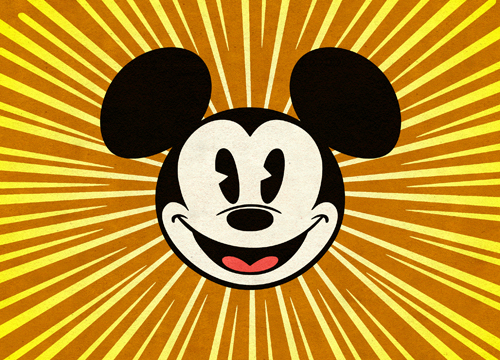

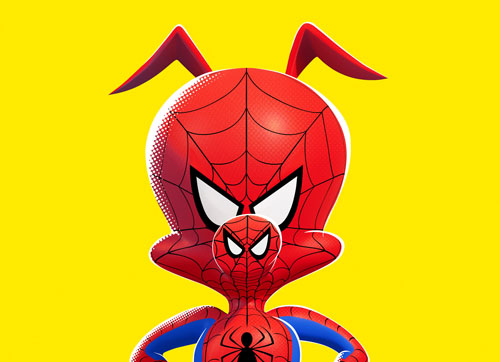

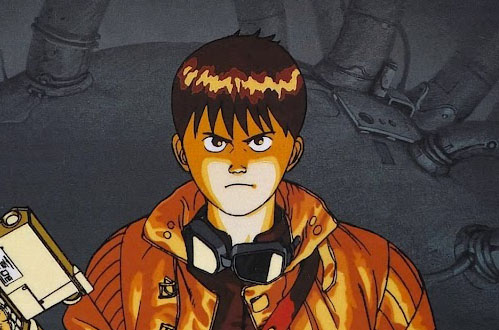

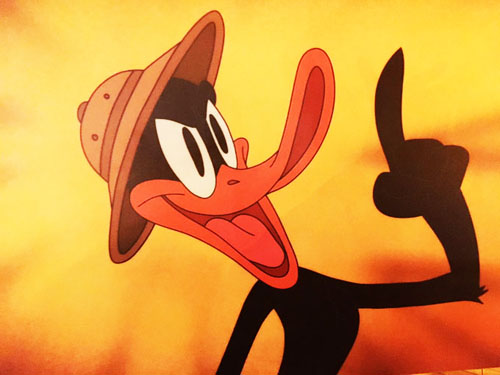





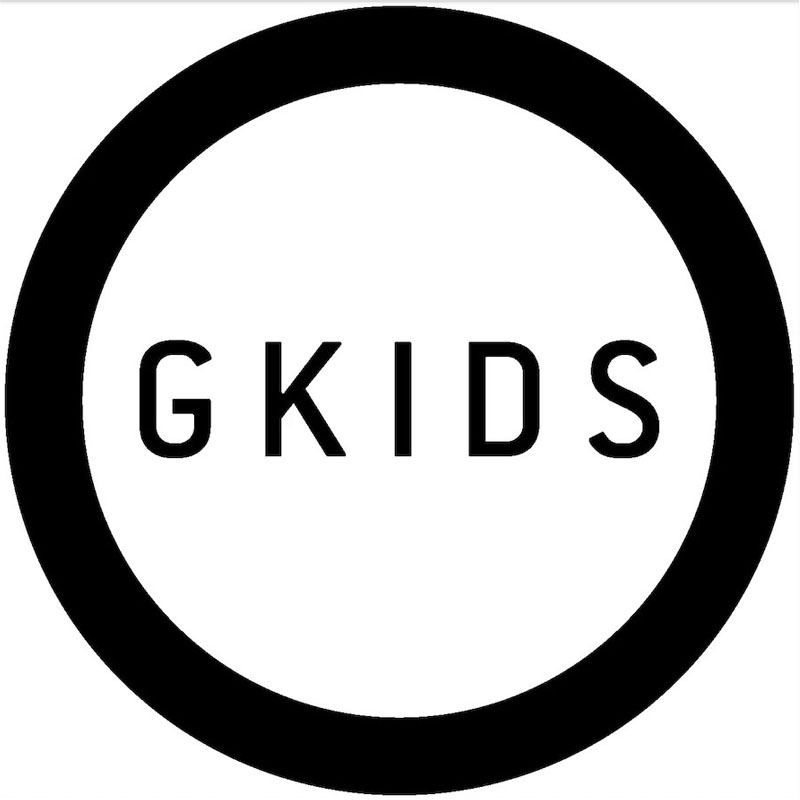





 The story supervisor is different on each film. A lot of it is about the relationship. I’ve worked with Lee (UnKrich) now on a lot of movies as a director and in story. We did Toy Story III together and now Coco together so a big part of my day to day and how we work together and how we run the story department is based on how we have worked together over the years. Being able to assert my influence on the film in general and help foster and staff an amazing group of story artists executing Lee’s vision and drawing it up, that took a little time and a lot of it came together from Lee and I working together and understanding what he is after. It’s not just you have more of a say, or you have a bigger plate at the table. To be the head of story at Pixar is really an opportunity, and this is from the Joe Ranft school, a big part of the job for me is to make sure that every story artist i’m working with is able to do what they can do at the highest level, and that they’re feeling connected to the film and feel like they can execute and that they are completely clear about and in sync with what our director Lee is looking for. It’s really more about everybody i’m working with is shining as bright as possible and that the director is getting everything they need to see their vision come to life. I’m kind of the facilitator along the way.
The story supervisor is different on each film. A lot of it is about the relationship. I’ve worked with Lee (UnKrich) now on a lot of movies as a director and in story. We did Toy Story III together and now Coco together so a big part of my day to day and how we work together and how we run the story department is based on how we have worked together over the years. Being able to assert my influence on the film in general and help foster and staff an amazing group of story artists executing Lee’s vision and drawing it up, that took a little time and a lot of it came together from Lee and I working together and understanding what he is after. It’s not just you have more of a say, or you have a bigger plate at the table. To be the head of story at Pixar is really an opportunity, and this is from the Joe Ranft school, a big part of the job for me is to make sure that every story artist i’m working with is able to do what they can do at the highest level, and that they’re feeling connected to the film and feel like they can execute and that they are completely clear about and in sync with what our director Lee is looking for. It’s really more about everybody i’m working with is shining as bright as possible and that the director is getting everything they need to see their vision come to life. I’m kind of the facilitator along the way. 





